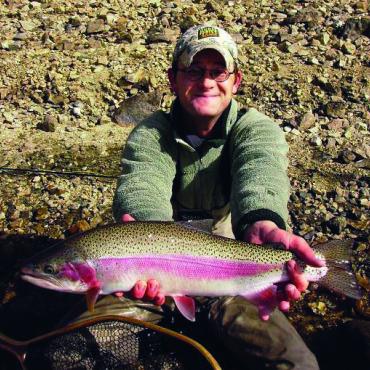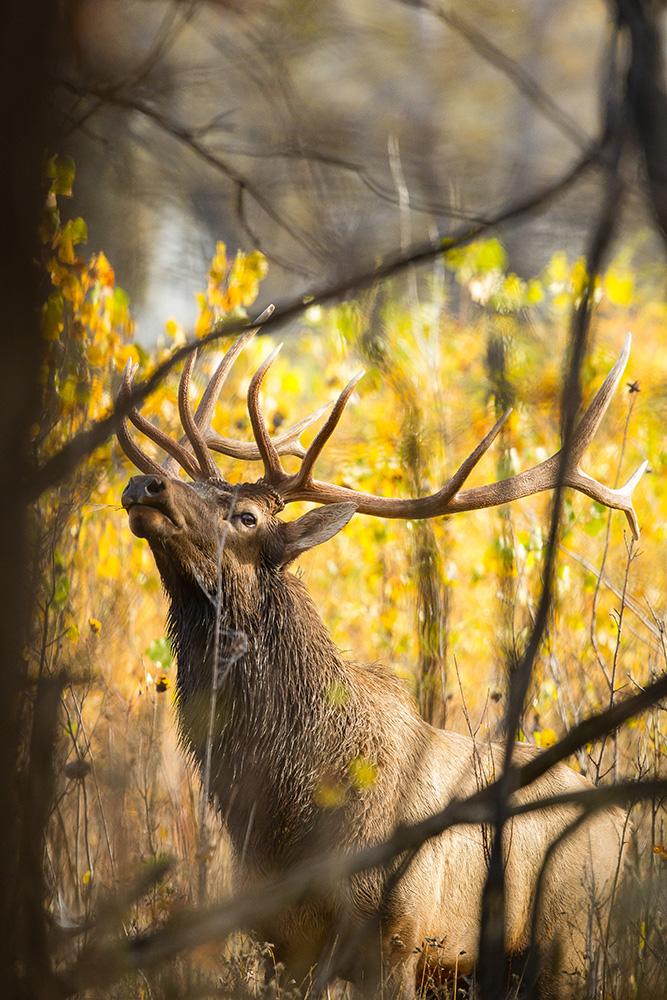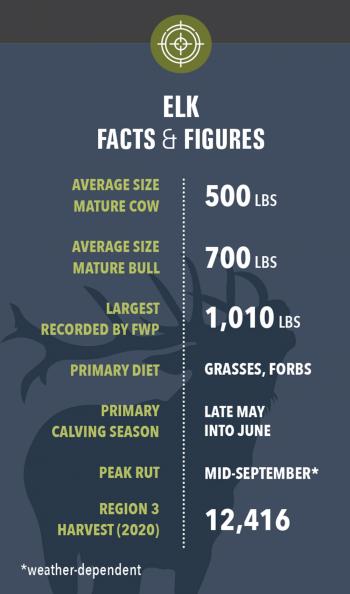Cock & Bull Story
Pursuing the big game icon.
In the pre-Colombian era, elk were plentiful throughout what would eventually become the lower 48. Historians estimate that individual elk were only slightly less numerous than bison in the Great Plains region, prior to European contact. Commercial hunting, habitat loss, and the rapidity of westward expansion pushed the species to near extinction. The survivors of those difficult times took refuge in the hardscrabble mountains, plains, sage flats, and forests of the Rocky Mountain West. The elk we hunt today carry in their blood the DNA and instinct that allowed their ancestors to adapt, survive, and thrive in world that had not yet embraced modern conservation practices.
Habitat
Elk live in a variety of habitats: coastal rain forests, high-desert badland breaks, foothills, and mountain alpine meadows. In southwest Montana, our elk tend to take full advantage of the varied terrain, from grassy foothills, to sage-studded benches, to the cover-providing sub-alpine timbered slopes.
In general, as the snow recedes in the spring, elk follow the newly emerging nutrient-rich grasses up-slope into higher altitudes. In the autumn, they do the same thing, only in reverse. When following the quality forage in the fall months, irrigated crop fields are a huge draw to elk trying to bulk up for the coming winter. Early snows or cold fronts accompanied with killing frosts will push elk into river valleys looking for easy meals and less pressure from predators. It’s likely that those lower-elevation areas of preferred habitat are on private land, meaning hunting access is extremely limited, if not impossible.
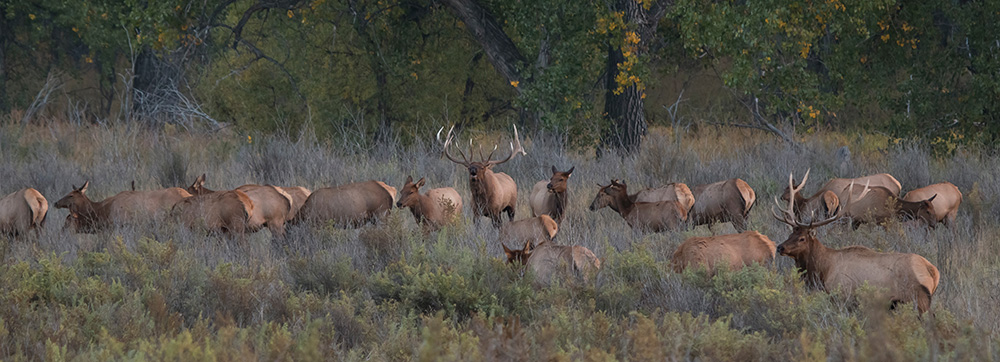
Behavior
Understanding the nuance of behavior between males and females is key. From late August to mid-September, both genders seek refuge from the heat and bugs by holing up in deep, dark timber pockets and hollows near springs, seeps, or other sources of water and the remaining grasses and forbs untouched by the searing late-summer sun. The cows tend to bunch up in small groups, six to 12 individuals. In areas where the forage, water, and cover are sufficient, herds of cows can be much larger, often over 30 strong.
Before and after the rut, bulls spend their time in relative solitude, or in small to medium-sized bachelor herds. While these herds are usually comprised of two to five individuals, I have seen groups of a dozen or more bulls spread out over a large swath of country. In recent years, these bigger groups seem to be more common and one theory is that increased predation has caused both sexes of the species to seek strength in numbers.
During the rut, dominant bulls gather harems of cows to breed. Depending on the forage, habitat quality, and predation, these harems can range in size from a couple of cows to a couple dozen. From a hunter’s standpoint, larger groups are much tougher to hunt. A big bull with an ample supply of future baby-mamas has access to numerous pairs of eyes and ears. While he can only service one cow at a time, the rest of the bunch, including weaning calves, are constantly vigilant for anything amiss. Unlike deer, elk can be virtually impossible to pattern. A likely herd will tease a hunter for several days, moving only a few hundred yards from bedding to feeding areas, and at the last possible moment of a stalk, the entire herd will pull a Houdini and vanish into the next drainage or drop behind a distant ridgeline.
Weather is also a huge factor in determining the whereabouts of elk. Early snows will push them to lower elevations; however, if these moisture-heavy events are followed by mild temperatures, late season “green up” is likely to occur, and in a world where every calorie counts toward survival, elk will return to higher elevations until harsher weather or hunting pressure drives them out.
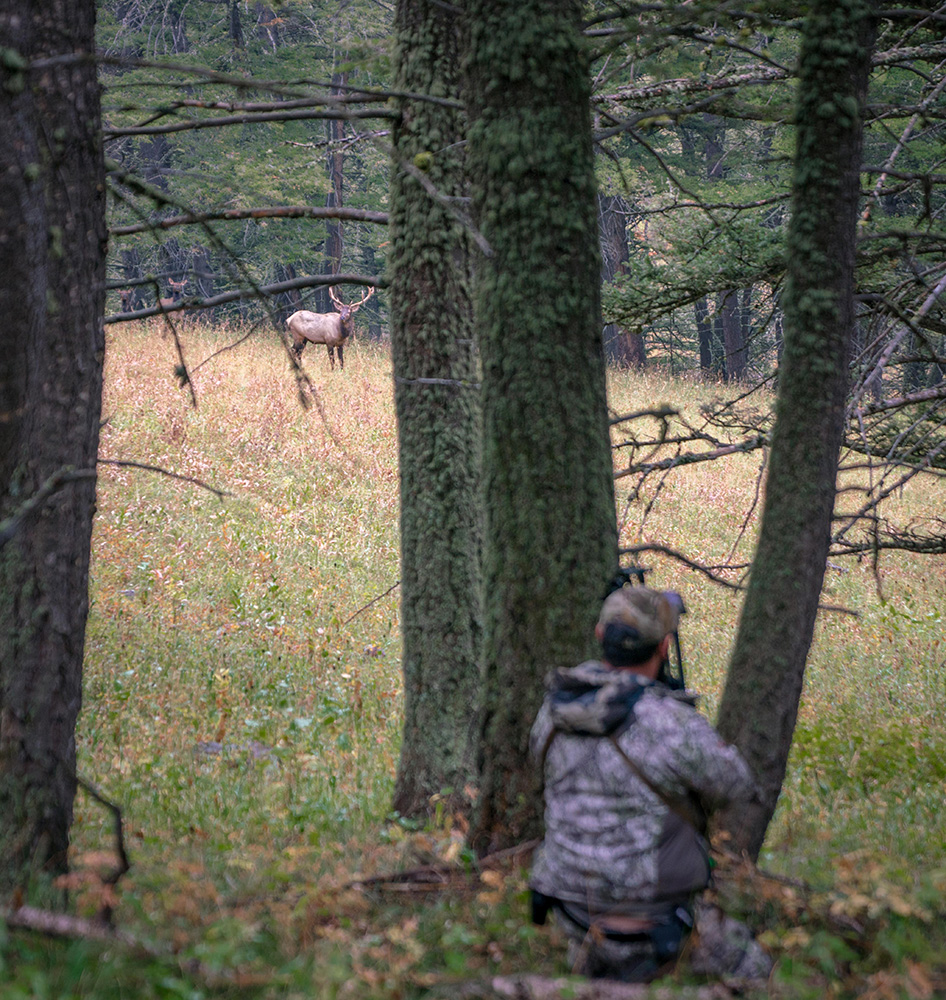
Gear
It should go without saying that the best possible weapon and optics one can afford are the bedrock of any elk-hunting kit. If an aspiring hunter has skimped on either item, then the money saved had better be invested in boots. Elk, especially those on public land in Montana, tend to spend the majority of the hunting season in steep, rocky, unforgiving, deadfall-choked, ankle-twisting terrain. A quality elk-hunting boot should have enough traction and rigidity to support the ankle and foot for many miles over rough terrain, but it should also be light and comfortable enough to allow for relative stealth, and reduced fatigue. A good boot should be something of a hybrid between a sneaker, a pac boot, and a mountaineering boot. Keep insulation in mind and spend a little extra money on a quality pair of gaiters. These will come in handy on frigid days and when slogging through deep snow.
As a guide, I have three hunting-specific packs; the average hunter should be able to get by with one, but it must meet a few criteria. Any hunting pack, especially one used for elk, should be able to support, in “relative” comfort, the weight of an elk quarter, in addition to all essential gear. An elk quarter can weigh in excess of 80 pounds, and unless you are fortunate enough to have access to pack stock, those pounds are most likely coming off the mountain on your back. A good pack should handle that weight in a fashion that allows a successful hunter to make several return trips to the kill site with a tolerable amount of fatigue. Also carry the necessary layers for winter-like conditions, as well as emergency survival gear, extra food, and a kill kit. My kill kit contains high-quality game bags, 50 feet of para-cord, a knife sharpener, an ultra-lightweight backpacking tarp, a Sven Saw, and a Nite Ize LED blinking clip light. With these simple and lightweight items, I’m able to get at least one load off the mountain before midnight, while feeling assured that the rest of my hard-won meat won’t fall victim to roaming scavengers.
As previously mentioned, your elk-hunting gear should include the best binoculars you can afford, and if they don’t fit into your budget, quality optics may justify a little extra debt, or a lifestyle adjustment when it comes to performance in the field. While a rangefinder and spotting scope are not totally necessary, they can reduce the amount of foot miles and distance-doubt that plagues many elk hunters. Consider sharing the cost of these items with your core hunting buddies or scour the internet for deals on second-hand, high-quality optics. Elk tend to share their homes with bears, and grizzlies have a hard time resisting the temptation of fresh blood on the ground. Go prepared: carry pepper spray within easy reach at all times when hunting or packing out big-game meat.
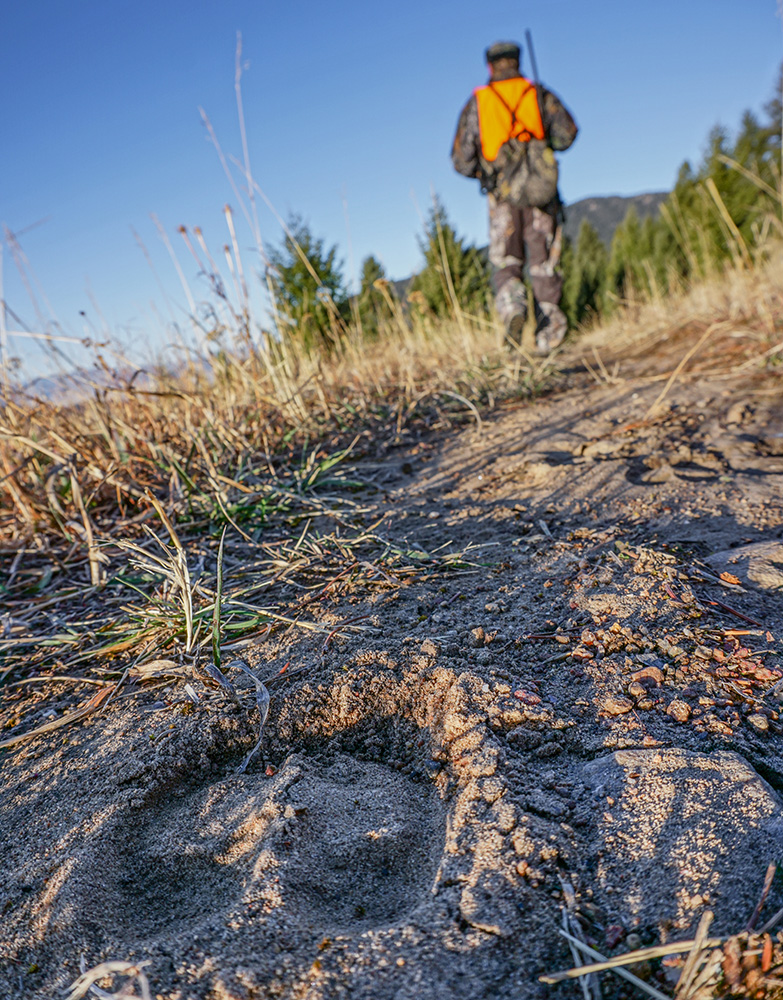
Rifle vs. Bow
I am not a purist. I believe that both archery equipment and firearms have a place in the arsenal of a serious elk hunter. That being said, both—and I mean both—weapons should become so familiar to the hunter that using them to their full lethal potential is as familiar as lifting fork to mouth.
In the preseason, dedicate at least a few hours a week to practicing with your weapon. Practice any type of shot that could present in a hunting situation, and do so when under an amount of physical stress. When it comes to targeting elk with a bow, draw weights should be set as high as the shooter can possibly handle. Rifles should be bored and chambered for big game, preferably one of the hard-hitting .30-caliber rounds. As a seasoned veteran in the outfitting world once told me, “the best elk rifle is the biggest one you can accurately shoot.”
When hunting elk with archery equipment, it’s critical that your shots are taken at the closest range possible. No matter how good you are at the 3D range, any bow shot on an elk over 30 yards is asking for trouble. Obviously, modern high-caliber rifles can be lethal at great distances. However, do yourself and your quarry a favor and get as close as possible before taking that shot. Ideally, these shots should be no farther than 300 yards. Utilizing classic woodsman skills and patience will greatly increase the down-range performance of your chosen weapon.
Pack-Out
Elk are big animals. Imagine a prize-winning steer at the county fair: that’s roughly the size and weight of the average adult elk. In almost every case, elk will have to be quartered to get them out of the field. This is where that pack and kill kit come into play. There is nothing easy about properly field-dressing and quartering an elk. If you’re even somewhat inexperienced, consider hunting with a friend who already knows the ropes. Properly caring for your meat in the field will pay dividends in the kitchen and at the table later on.
Hunt far away from trailheads, trails, and campsites; blood and gut piles will attract scavengers and bears, and members of the non-hunting public are less than tolerant when confronted with the gore of a successful hunt. If you’re fortunate enough to have access to pack stock, and the skills and experience to use them, horses and mules can make the pack-out process much easier. That being said, one will usually still have to schlep meat and quarters from the kill site to where the stock is picketed.
Rut
Cow elk come into heat sometime around early September, and this cycle can continue through mid-October. Peak estrus varies by herd and geographic location. Cows in large groups tend to synchronize, meaning that they’ll ovulate within a few days of one another. This fact keeps the herd bulls busy and on edge, almost singularly focused on procreation and fighting to protect that opportunity. Rut-crazed bulls are at their most distracted, and this fact is the window most often exploited by successful elk hunters. While it’s usually rut activity that allows archery hunters to get in close for those critical shots, rifle hunters can also take advantage of the rut by recognizing that bulls are often exhausted and very hungry immediately following peak rut activity. While the rut and associated activity can help to level the hunter-prey playing field, remember: elk are survivors, and that seemingly rut-crazed bull didn’t get big by being stupid.
Regs
Regulations vary widely throughout Montana. In many districts, elk hunting is only allowed by special permit. While drawing statistics are some of the best in the country for residents and non-residents alike, shoulder seasons and game-damage hunts are also great ways to fill the freezer, if meat is all you’re after. When hunting during the general season, be sure you know all the specifics regarding your hunting region. Follow these rules to the letter and remember that hunting is a privilege, and only by engaging in ethical and respectable behavior will we retain that privilege.
Kurt Dehmer owns Durty Kurty's Guide Service.

